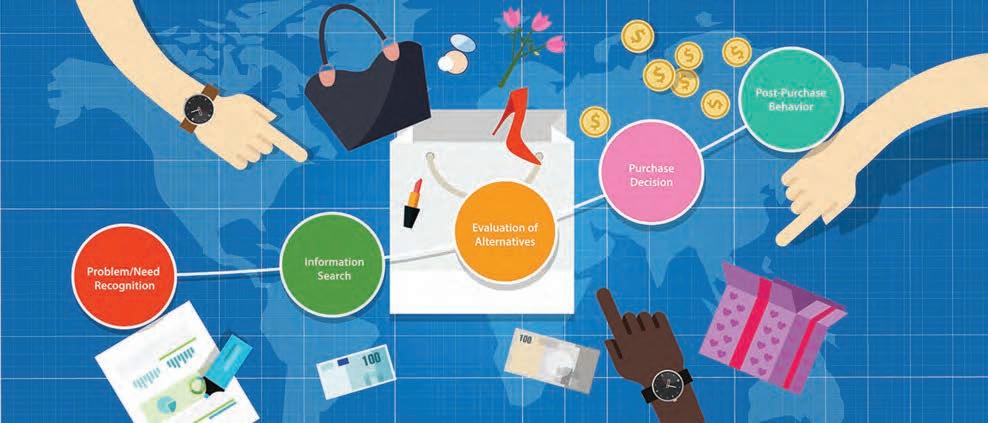
4 minute read
1.7 Businesses and their behaviour as economic agents
Resourceseses
Weblinks The circular flow model of a market economy Circular flow Circular flow matrix
Advertisement
1.5 Activities
Students, these questions are even better in jacPLUS
Receive immediate feedback and access sample responses Access additional questions
Track your results and progress Find all this and MORE in jacPLUS 1.5 Quick quiz 1.5 Exercise 1.5 Exercise 1. This set of questions is about economic systems: a. Define the term, economic system. (1 mark) b. Outline the three basic economic questions that all economic systems must answer. (3 marks) c. Contrast a pure market economy from a purely planned economy. (4 marks) d. Explain what is meant by market failure that can occur in free or pure market economies. (2 marks) e. These days, most countries have mixed economies. Outline what is meant by a mixed economy. (2 marks) f. For each of the following areas, identify and outline one important market failure and suggest how government intervention in decision making can help to overcome the problem: i. answering the what and how much to produce question ii. answering the how to produce question iii. answering the for whom to produce question. (3 marks) 2. This question is about the simple three-sector circular flow model for a mixed economy: a. Describe the operation of this circular flow model. (3 marks) b. Distinguish the roles of the household or consumer sector from those of the business or producer sector. (2 marks) c. Outline the main purposes or roles of the public or government sector in this economy. (2 marks) 3. This is a problem solving task. Assume that the small African country of Zenophobia originally had a GDP equal to $3 million in 2023. Referring to parts of a three-sector circular flow model for Zenophobia, explain logically, using the correct order or sequence, what would happen to the country’s economic conditions (i.e. production, employment of resources, incomes and living standards) given each of the following hypothetical events: a. Households and governments decide to reduce their spending to $2.6 million. (3 marks) b. The value of GDP increases to $3.9 million. (3 marks) c. There is a dramatic rise in the total value of income paid to households by $1.1 million. (2 marks) 4. The following application question is about economic systems. Imagine you and your friends were stranded on an uninhabited tropical island, without any provisions or money: a. To survive, identify the three basic economic questions or choices your group would have to answer. (3 marks) b. To organise the production and distribution of goods, services and incomes, describe which one of the four types of economic system you believe would be best suited to answer the three basic economic questions. Justify your choice of system. (2 marks) UNCORRECTED PAGE PROOFS
Solution and sample responses are available online.
1.6 Consumers and their behaviour as economic agents
KEY KNOWLEDGE
• economic agents and the concept of the public and private sectors of the economy • the traditional economic viewpoint of consumer behaviour: self-interest, maximisation of utility, rationality, informed decision making and marginal benefits from consumption • the ways consumers and workers might respond to incentives and disincentives, including taxes and tax rebates, subsidies and regulations
Source: VCE Economics Study Design (2023–2027) extracts © VCAA; reproduced by permission. Using the simple three-sector model of a mixed economy (like we have in Australia), we have seen that there are three main decision makers that play important roles. We call these groups economic agents. They include the following: • Consumers or household sector Economic agents are those groups in an economy that make key • Businesses or producers that make up the private sector decisions. They include consumers, • Government activities and enterprises that make up the public sector. producers and governments. Consumer or household sector Businesses or producers in the private sector Government and the public sector
Economic agents UNCORRECTED PAGE PROOFS
Over the next few sections, we will look at the factors motivating and affecting the behaviour of each of these sectors, starting with consumers.
In an attempt to understand what makes consumers tick, it draws on ideas from psychology, anthropology and economics.
There are over 26 million people making up Australia’s household sector, and every one of them is a consumer of goods and services. As mentioned, we will attempt to understand consumer behaviour and what motivates them to spend or not spend.

At the outset we need to realise that there are many types of consumers such as the price-conscious, cautious, impatient, impulsive, adventurous, and bargainseeker. This can make them quite unpredictable, so it is difficult to generalise about their behaviour. Despite this, gaining a better understanding of consumers is of great importance for businesses’ sales, success and profitability.
FIGURE 1.20 Economists are interested in studying the factors that affect consumer behaviour and their response to changing conditions. 1.6.1 The traditional economic viewpoint of consumer behaviour Consumer behaviour looks at why, how, where and when consumers choose to purchase or not purchase a good or service. The traditional viewpoint is that consumers are motivated by In the 1800s and earlier 1900s, economists traditionally assumed that consumers behaved rationally, acted in their own self-interest, had priorities or ordered preferences, made thoughtful and informed decisions and factored in diminishing utility or reduced pleasure from increased consumption of a particular good or service. They assumed that consumers sought to maximise their pleasure and UNCORRECTED PAGE PROOFS minimise their pain. Figure 1.21 summarises, these traditional assumptions about self-interest, are well informed consumer behaviour. and seek to maximise utility or satisfaction when they make purchases.










